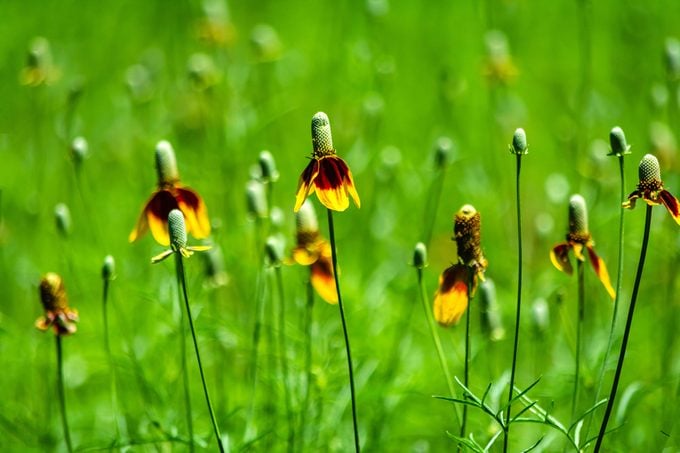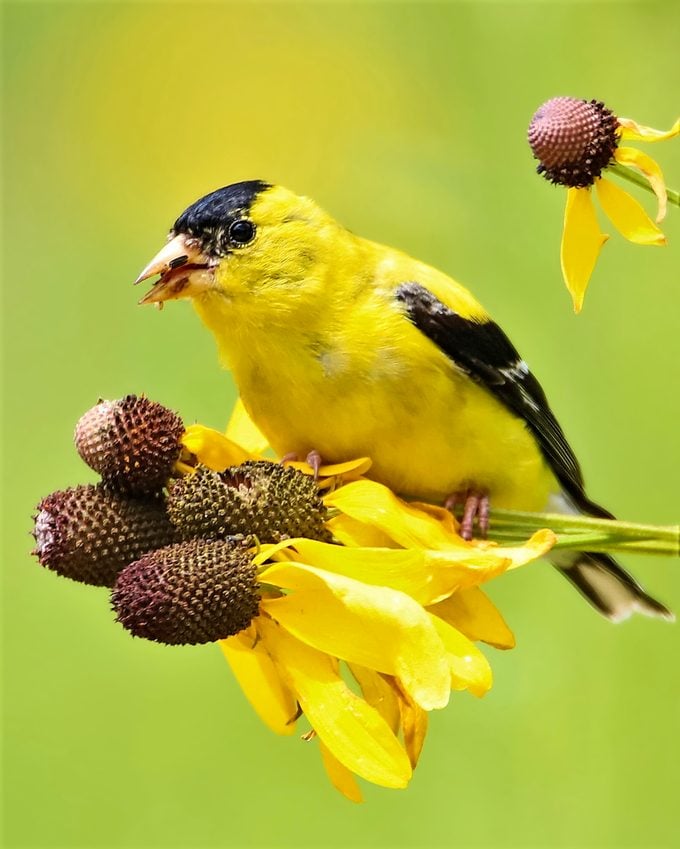Prairie Coneflower Thrives in Hot, Sunny Spots
Updated: Sep. 26, 2023
If your garden is dry, sunny and hot, try prairie coneflower! These colorful native wildflowers will delight birds and pollinators.
Prairie Coneflower Care

- Common name: Prairie coneflower
- Botanical name: Ratibida columnifera
- Light: Full sun
- Soil: Well-draining
- Watering: Drought-tolerant
- Height: 1 to 3 feet tall
- Zones: 4 to 9
- Attracts: Bees, butterflies, birds
You’re probably familiar with purple coneflower (Echinacea purpurea), but you may not know prairie coneflower. These native plants are in the aster plant family. The colorful yellow and red wildflowers are adaptable and easy to grow from seed. Plant them in full sun for the best flowering. They rarely need supplemental water and dislike wet and heavy clay soils.
This plant is also sometimes known as Mexican hat because of the central disc that protrudes prominently up like a sombrero. However, the common name prairie coneflower is preferred to prevent the spread of cultural stereotypes.
Grow coneflowers to attract butterflies and birds.
Prairie Coneflower Benefits

These long-blooming, drought-tolerant flowers are basically carefree. They also offer plenty of wildlife benefits. Pollinators love the nectar and birds like goldfinches gobble up the seeds. Deer usually steer clear. Pair them with other sun-loving prairie plants such as black-eyed Susan and blanket flower.
Individual plants are short-lived. But they do reseed prolifically, so you’ll have new plants each year. Trim them back in fall if you want to reduce their spread.
Check out the top 10 stunning summer flowers that bloom nonstop.
More Heat-Tolerant Pollinator Plants

“Which plants thrive in dry conditions and attract birds and butterflies?” asks Birds & Blooms reader Cara Washburn of McAllen, Texas.
Horticultural expert Melinda Myers says, “Look to native plants that tolerate your climate and bring in wildlife. Black-eyed Susan, bluebonnets, blanket flower, Indian paintbrush, golden tickseed, mealycup sage, prairie coneflower, prairie verbena, Texas lantana and yaupon holly are just a few plants that survive in hot, sunny conditions.
For even more options or to see if a specific plant will grow in your yard, contact your local university extension office. They will have first-hand knowledge of your area.”
Next, learn how to attract butterflies with late-blooming asters.




















